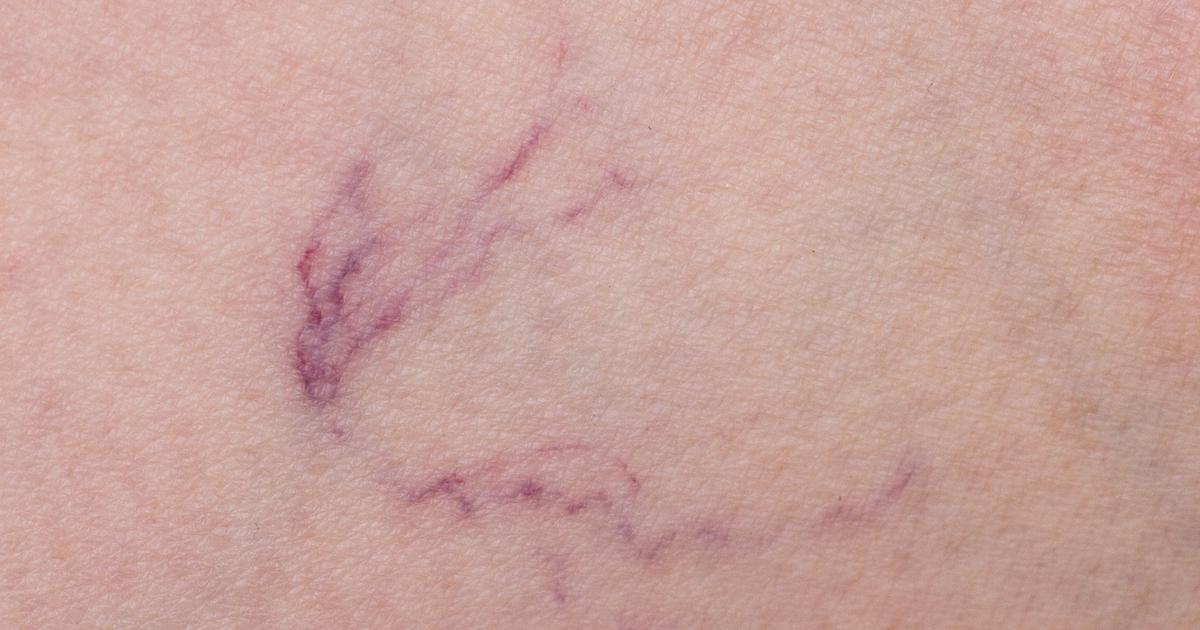Common Causes And Complications Of A Port Wine Stain
A port-wine stain is a type of congenital capillary vascular malformation that affects an estimated one in every three hundred newborns. This birthmark develops most frequently on the face, scalp, and neck, and it is a pink or reddish color at birth. As a child ages, port-wine stains tend to become darker in color, often reaching a deep purple. Unlike some other types of birthmarks, port-wine stains are flat (not elevated above the skin's surface). However, adult patients with port-wine stains might notice the formation of ridges or lumps in the area. To diagnose port-wine stains, doctors simply observe the skin. If the port-wine stain is located on the face or near the eye, imaging studies such as MRI scans may be performed to check for rare underlying medical conditions that are sometimes associated with capillary vascular malformations. Port-wine stains can be treated with pulsed dye laser therapy, and some patients might choose to wear concealer.
The major causes and potential complications associated with port-wine stains are discussed below.
Issues With Capillaries

Port-wine stains develop due to issues with capillaries, which are small blood vessels located just beneath the surface of the skin. Tiny nerves are responsible for keeping the capillaries constricted, and this allows the skin to stay cool and light in color. In patients with port-wine stains, the function of the nerves is impaired, and the capillaries cannot constrict. Instead, they remain permanently dilated, and the dilation results in the red skin discoloration present with this condition. Scientists have recently discovered a genetic mutation is the cause of the capillary issues. While many genetic mutations are inherited, the specific mutation that causes port-wine stains takes place after conception; these types of mutations are not inherited, and they are not passed down to future generations.
Keep reading to learn more about the causes and complications of port-wine stains now.
Sturge-Weber Syndrome

A port-wine stain is one of the major clinical features associated with Sturge-Weber syndrome, a rare medical condition that causes changes in the development of specific blood vessels. In patients with Sturge-Weber syndrome, the port-wine stain is typically on the forehead, temple, or eyelid. Individuals with the condition may also have glaucoma (increased eye pressure) and leptomeningeal angioma, an abnormality in the blood vessels in the tissues that cover the brain and spinal cord. Leptomeningeal angioma can cause a decrease in blood flow to the affected area, and patients may experience symptoms that resemble a stroke, including temporary vision loss and weakness on one side of the body. Focal seizures could also occur. Patients with this condition may have normal cognitive abilities; however, some patients could have learning difficulties that vary in severity. Genetic testing is used to diagnose this syndrome.
Get more details on the causes and complications of a port-wine stain now.
Klippel-Trenaunay Syndrome

Klippel-Trenaunay syndrome is a genetic condition that produces changes in blood vessels, bones, and soft tissues such as muscles and skin. Patients with the syndrome typically have varicose veins, an abnormal overgrowth of both bones and soft tissues, and a port-wine stain that covers part of a limb. The overgrowth of bones and soft tissues usually impacts one of the patient's legs, but it may occasionally affect their arms. In rare instances, the torso could be impacted. The area impacted by the overgrowth could feel heavy and painful, and there is generally a reduction in the range of motion at the affected site. If a leg is affected, it could become more than two centimeters longer than the unaffected leg, and this might result in difficulties with walking. Doctors may recommend duplex scanning, MRI scans, and a scanogram to evaluate the blood vessels and bones. Surgery might be necessary to correct an overgrowth in a leg, and patients often benefit from laser therapy and epiphysiodesis.
Learn about major complications of port-wine stains now.
Glaucoma

Patients who have a port-wine stain on the face or near the eyelid are at an increased risk of developing glaucoma. This eye condition elevates the pressure inside of the eyes, and it can lead to vision loss if left untreated. While it is possible to have glaucoma in both eyes, patients with port-wine stains tend to develop glaucoma in the eye closest to the birthmark. Patients who have port-wine stains should have regular eye exams with an ophthalmologist or optometrist to monitor their eye pressure and vision. During the exam, the doctor will check the patient's visual acuity, and they will also measure the pressure in both eyes. The measurements can be taken with a machine called a non-contact tonometer. This instrument emits a puff of air that flattens the cornea, and the machine measures how much resistance is present. Normal eye pressure measurements range from twelve to twenty-one, and the average eye pressure is fifteen. To reduce elevated eye pressure, doctors often begin by prescribing medicated eye drops such as beta-blockers, prostaglandins, and alpha-adrenergic agonists. Oral medications such as carbonic anhydrase inhibitors may be prescribed if eye pressure does not improve with eye drops alone. Patients who have open-angle glaucoma can sometimes be treated with laser therapy, and surgical procedures such as filtering and drainage tube insertion could be considered.
Continue to reveal more complications of port-wine stains now.
Issues With Self-Esteem

Port-wine stains can cause issues with self-esteem, especially if they are located on the face or neck. To reduce the risk of psychological distress, parents often choose to have their child's birthmark treated with laser therapy while they are very young. In fact, many health professionals recommend laser treatment for port-wine stains before a baby's first birthday. At that age, port-wine stains are usually lighter, and treatment tends to have a higher success rate. Older children and adults with port-wine stains can still be treated with laser therapy, but they may require more treatment sessions, and the clearance rate might not be as high. Some patients with port-wine stains choose to conceal them with waterproof makeup. Specialty concealers used for this purpose are available on prescription, and patients may be able to get application tips and color matching services from a trained advisor.